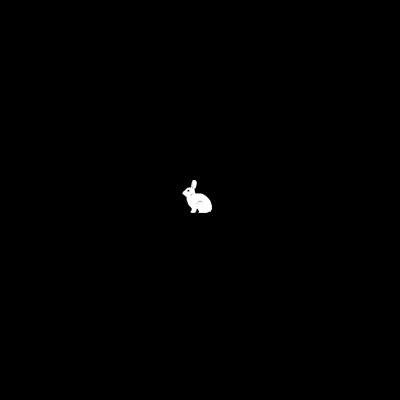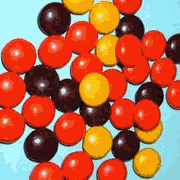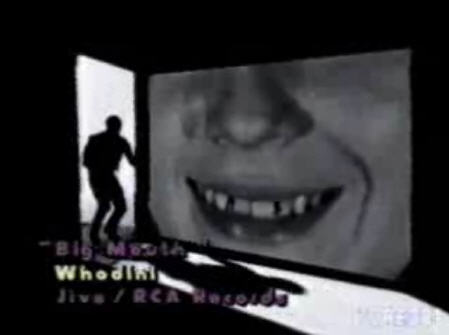View current page
...more recent posts
Dennis Hollingsworth's paintings have been mentioned here a few times. What follows is an attempt to describe the work and answer some criticisms of it.
Let's start by saying what it definitely isn't:
"just about paint"
That's like saying that The Rite of Spring is just about musical notes. If you think the canvases are some dull, said-a-million-times statement about materiality, as some commenters have suggested, please look again and remember that the whorls, blobs, and explosions are not mere accidents but also a record of events shaped by a human consciousness. Not a vision of an animate cosmos as literal as, say, Blake's, but still a teeming universe of suggestive contours and textures, thwarting powers of speech--a morphed mashup of animals, ghosts, genetic mutations, war wounds, and impossibly tangled plant life, at least in this viewer's art-prompted reckoning.
One could say in '80s jargon that his thick paint is a hyperrealized version of past expressionist art--a Baudrillard term meaning roughly "on steroids." But to call it pornographic, as one commenter did, rather ignores the joyful, non-synthetic element. The artist says the work is an "affirmation of paint" after the negation of the post-Modern years. But does that make it Modernist? If so, it's closer to surreal, abject side of Modernism that Clement Greenberg and other 20th Century critics tried to edit out of history. The colors may be joyful, but the sea urchin-like blobs that cling to everything seem vaguely alien and parasitic. The intricate cutting and slicing of organic forms suggests an anatomist's inner burrowing.
And lastly you have the linguistic side of Hollingsworth's work--a hermetic system of recurring elements (which have names--see Scott Speh's review) that serve as a private lexicon in a state of perpetual breakdown and reshuffling. This recombinant practice hews closer to postmodernism than the Modernism that forever proclaimed its abstract vocabularies as new and scientifically derived. Hollingsworth's work is aware of nonrepresentational conventions and builds on the limited vocabularies of Peter Halley, Jonathan Lasker, et al, who in turn built on the Abstract Expressionists. Yet ultimately his fearlessness to engage in actual, dense, convoluted, expressionistic (or expression-like) paint handling gives him a richer and more varied range of iconography than those predecessor "deconstructors."
Update: Revised in Feb. 2009.

Gro-Rabbit--artist and actual title unknown
Talking about art conservation issues makes me miserable. It's soul-deadening and antithetical to art.
Dennis Hollingsworth has posted a thoughtful reply to my post about a recent painting of his. He also responds to some of the comments about his work after that post, which ranged from complimentary to dismissive to WTFBBQ? To answer queries about the physical creation of his paintings, he offers an annotated photo of his studio tools. These reminded me of an interesting exhibit a few years ago at Apex Art in NYC, curated by Charles Goldman, called "Making the Making," where Goldman presented an array of the actual home-built devices used by artists to make their work. The variety of people's creative methods, as reflected in the eccentric and/or scrupulously precise objects on display, suggested an alternative form of discourse, approaching the level of art itself. It's an esoteric subject, but unlike, say, the museological presentation of writer's notes or musical notation, or even the how-tos of movie F/X, visual artists make this behind-the-scenes stuff so there's a higher chance it will have intrinsic visual interest, or even a reflexive function. Hollingsworth's "daubers" of wrapped, stained cloth, and the origami pincers he uses to create his sea-urchin-like "monads" might have been a nice addition to Goldman's show.









"Algebra 2 Trig (Beats)" [mp3 removed]
Thanks to Rhizome.org executive director Lauren Cornell for the generous mention of this page in her recent interview with Artkrush.* Here's an excerpt from the interview, but be forewarned that while Cornell's answer is verbatim, interviewer Paul Laster's question has been tinkered with in the interest of good-natured ****satire****. His real question can be found by clicking through to the full exchange.
Artkrush: In the early days of digital art, there was a lot of hype but little actual involvement of artists, galleries, and institutions beyond the token "net art room" in the big festivals. Then the art world took a collective step backwards with its fixation on collectors that were increasingly rich, buying paintings that were increasingly bad, by artists that were increasingly young. What has been going on in new media art during all this time? I hear the Internet is delivering streaming video these days--is that true?Cornell exercises admirable restraint throughout the interview in not saying "duh"--not so much to Laster's questions but to an art world fleeing technology cooties while continuing to bestow princely sums on sub-sub-George Condo cheeky primitivism in the name of some atavistic "cult of the hand." (Yeah, yeah, Paul Chan, Paul Pfeiffer...) In one intervew she's tasked with bringing everybody up to speed on all the cool stuff that's been happening as the world beyond the galleries continues to change.
Lauren Cornell: I actually think that interest in new media is now broader and deeper than before. The early craze around the first wave of Net art faded around the same time as the dot-com era busted. And it's true, the field did take a hit in terms of funding and support. I also think in general it was hard for people to enjoy the computer-based work of that era; viewing artwork on computers is often a psychological leap that is hard for people to make, and the Internet, which most of the works used, was quite a different, more confusing place then. In her essay "On the Vernacular Web," artist Olia Lialina describes it well, as a thin network of pages, ridden with error signs and the first kinds of online personal expression. This is a very different web and cultural moment than we have today. Now, the Internet is a mass medium, with billions of users and much more influence on culture, politics, and personal identity. The field of work that deals with the Internet or networked technologies has grown tremendously and, I believe, gained a wider relevance as digital media has become so much more common.
Update, 2011: The Artkrush link has been changed from http://beta.artkrush.com/33189 to http://artkrush.com/33189.html.

Whodini, "Big Mouth" [YouTube]. This is the long version with the spring reverb, etc. Note outdoor cube farm. The video is a barrel of fun and all the hilarity kind of disguises what a lean, mean song this is. When this version first appeared on '80s radio 'twas a unique thing in the audio landscape. Possibly the most minimal pop then extant.
